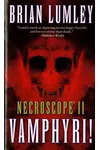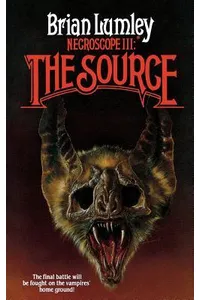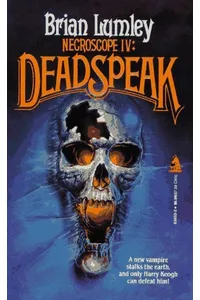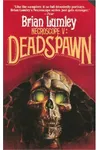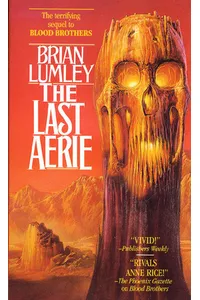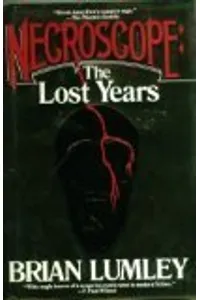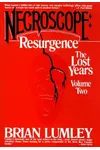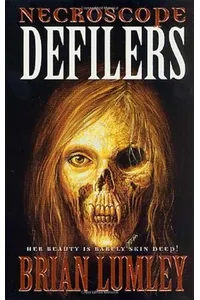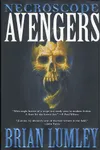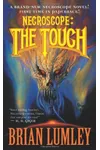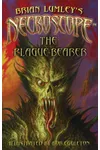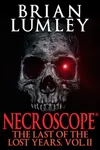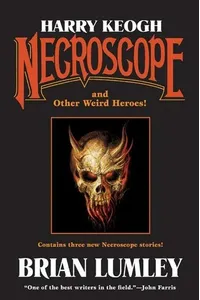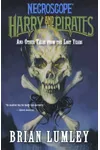Dive into the chilling, thrilling world of the Necroscope series, where the dead whisper secrets and vampires lurk in the shadows of Cold War espionage! Penned by British horror maestro Brian Lumley, this 18-book saga blends horror, fantasy, and spy-thriller vibes, following Harry Keogh, a man who chats with the deceased to battle monstrous Wamphyri vampires. It’s a wild ride that redefines vampire lore and explores life beyond the grave.
Since its debut in 1986, Necroscope has captivated readers with its unique mix of supernatural dread and geopolitical intrigue. Ready to uncover a horror classic that’s equal parts eerie and exhilarating? Let’s explore the saga’s origins, key stories, and lasting legacy!
How Necroscope Began
Brian Lumley, a former Royal Military Policeman turned horror-fiction titan, launched Necroscope in 1986 after retiring to focus on writing. Inspired by H.P. Lovecraft’s cosmic horror and classic vampire tales like Bram Stoker’s Dracula, Lumley wanted to craft a fresh take on vampires as alien parasites, not just gothic bloodsuckers. His fascination with psychic phenomena and Cold War tensions shaped the series’ blend of ESP-driven espionage and supernatural terror, creating a genre mashup that felt bold and new.
The first novel, Necroscope, introduced Harry Keogh and his Deadspeak ability, setting the stage for a sprawling saga. Lumley’s knack for weaving real-world paranoia with otherworldly horror hooked readers, spawning 17 sequels and short story collections over nearly three decades.
The Heart of Necroscope
The Necroscope series kicks off with Necroscope (1986), where Harry Keogh discovers his ability to commune with the dead. Recruited by Britain’s psychic spy agency, E-Branch, he faces Boris Dragosani, a necromancer tied to the vampire Thibor Ferenczy. Vamphyri! (1988) dives deeper into vampire lore, revealing the Wamphyri’s alien origins and brutal power. The Source (1989) takes Harry to the vampire-dominated world of Sunside/Starside, blending sci-fi with horror. Deadspeak (1990) sees Harry’s powers evolve as he confronts new Wamphyri threats.
Lumley’s series thrives on themes of life after death, psychic warfare, and the battle between humanity and monstrous evil. His vampires, parasitic leeches from another world, are sadistic and cunning, a far cry from romanticized undead. The Cold War setting adds tension, with psychic spies navigating a world on the brink. Lumley’s gritty, vivid prose and knack for blending genres create a universe that’s both unsettling and immersive, with Harry’s connection to the dead offering poignant moments amid the terror.
The series spans diverse settings, from Romanian mausoleums to parallel dimensions, and evolves into cosmic horror as Harry’s powers—like teleporting via the Möbius Continuum—grow. Fans love the intricate plotting and bold risks, like sacrificing major characters for the story’s sake.
Why Necroscope Resonates
Necroscope redefined vampire fiction by blending horror with sci-fi and espionage, influencing modern genre mashups. Its cult status among horror fans stems from Lumley’s fearless storytelling and unique vampire mythology, earning praise from outlets like Publishers Weekly and a British Fantasy Award nomination. The series’ exploration of death as a continuation, not an end, resonates deeply, offering both chills and philosophical depth.
Despite less mainstream fame than Anne Rice’s vampire tales, Necroscope’s dedicated fanbase and recent movie buzz signal its enduring appeal. Lumley, a Grand Master of Horror, left a legacy that continues to thrill readers seeking something beyond typical vampire fare.
- Publication Years: 1986–2013
- Number of Books: 18, plus short story collections
- Awards: British Fantasy Award finalist (Necroscope), World Fantasy and Bram Stoker Lifetime Achievement Awards for Lumley
Grab Necroscope and plunge into a world of psychic spies, alien vampires, and the undead’s secrets! Whether you’re a horror buff or a thriller fan, this series promises a spine-tingling adventure you won’t forget!

